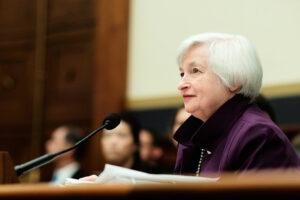Acting now and well is key

With what is happening to the global economy, with no less than the IMF Managing Director Kristalina Georgieva highlighting the challenge to prevent it from becoming a dangerous new normal, we found it quite sad to read that the government is just discussing “policy directions for the rest of the year and the first quarter of next year.” The President himself also declared our readiness to “defend the peso” in the next few months. The peso weakness might continue to stoke inflation, the Palace even explained.
But the peso has been losing for most of 2022. As for inflation, as early as March 2022, Philippine Statistics Authority data on prices already suggested that inflationary pressures have been building up when inflation hit the upper end of the government target of 2-4% for this year. Since then, inflation has breached the target and the forecasts of the Bangko Sentral ng Pilipinas (BSP), ending the third quarter at 6.9%. The first nine months of the year averaged 5.1%.
Nothing could be more urgent.
Yet, we lost the opportunity to start tightening monetary policy earlier and more gradually.
We clung to the notion that the weakness of the peso should be welcomed, and inflation pressures derived only from the supply side, and therefore, are transitory. We ignored those petitions for transport and wage adjustments, the hint of second-round effects. Even as oil prices surged, the impact on inflation expectations was lost on us. Both business and consumer expectations in the first three quarters of 2022 already gave signs of higher inflation concerns.
With our benign assumptions of things to come, monetary policy decided to take baby steps in May and June when the probability of missing the inflation target was already pushing 65% as early as May. As a result, under the new administration, an off-cycle meeting of the BSP Monetary Board had to be convened to jack up the BSP’s policy rate by an unexpected 75 basis points (bps), followed by two 50-bps increases. The peso was absorbing the additional shocks from the global volatilities.
Pulse Asia’s periodic nationwide survey on urgent national concerns and performance ratings of the National Administration on selected issues is another wake-up call to our political and economic leadership. For a number of years, “controlling inflation” has been the top concern of their respondents, followed by concerns about workers’ pay, job creation, and poverty reduction.
The results from the recent survey covering Sept. 17-21 were no different from earlier polls. Released to the public on Oct. 6, some 66% of all respondents expressed concern about the soaring prices of basic commodities. Ranked first by 35%, second by 18%, and third by 13%, “controlling inflation” topped the other three most urgent concerns.
Between June and September, the new Administration had nearly 90 days to address these most urgent concerns of the Filipino people. But apparently, its efforts were not good enough because the percentage share of those who expressed utmost concern for inflation even rose from June’s 57% to September’s 66%. Such an increment of nine percentage points (ppts) exceeded those increases in the concern for job creation (six ppts) and peace promotion (six ppts) and fighting criminality and involuntary hunger which both rose by five ppts.
It should surprise no one then that of all the Pulse Asia respondents, only 31% approved of the Marcos government’s management of inflation. With some 42% actual disapproval, the government’s net approval rating was negative 11%. What is interesting is that the issue of inflation was found to concern the biggest share of the respondents at 66%, and yet the approval rating of government handling was the lowest, or its disapproval the highest.
We would not call it “creative communication,” this latest Palace release about the President’s bold declaration in defense of the peso with its weakness motivating higher inflation. The timing is definitely off. Those fighting words came two weeks after the public expressed concern about inflation and strong disapproval of this Government’s management of inflation. More important, it was no more than a policy intention as it is forward looking: defending the peso is to commence only “in the coming months.” This is quite different from the BSP governor’s statement earlier this month that the central bank has been active in the FX market, and the interest rate action that began in May. This is also very far from the National Economic and Development Authority (NEDA) chief’s assurance of the “government’s greater sense of urgency.”
Remember Ms. Georgieva’s mantra to “act now and act together?” Individual economies can do no less than prepare for what is expected because we are moving from a more predictable world to one that is more fragile, uncertain, and volatile. If the global economy is like a ship in choppy waters, it is unwise to wait for a few more months before we take action. We cannot afford to lose time; otherwise, we lose sleep in the future.
Nothing is creative, or perhaps constructive, about projecting our performance in handling price pressures at the expense of other countries. In the first place, the BSP itself admitted that we might breach the target of 2-4% this year, and the next.
We agree that under the present circumstances, a combination of firm interest rate action and occasional but strategic FX intervention in the market should help stabilize the peso and moderate its pass through to inflation. This twin response, one, mitigates the accumulation of inflationary pressures from the second-round effects; two, minimizes financial stability risks including possible corporate distress due to currency mismatch; and, three, avoids de-anchoring inflation expectations.
Beyond that, it is crucial to focus on what drives the peso depreciation and its impact on market order. The logic of the peso being weak because the dollar is strong is surprisingly true — but only in part. As the Fund’s Gita Gopinath and Pierre-Olivier Gourinchas recently observed, the dollar is at its peak since 2000. With the US currency keeping its share in world exports at around 40%, emerging markets’ import dependency and reliance on the dollar for invoicing imports, the inflationary consequences cannot be underestimated. Half of all cross-border loans and global debt securities are dollar-denominated.
But what is equally important is to recognize that the peso continues to depreciate because the country’s balance of payments is in serious deficit. We have incurred a nearly $8 billion shortfall in the first nine months of 2022 compared with year-ago level of only $665 million. Worse, it is expected to further deteriorate in the last few months of the year. More demand for dollars for imports, debt servicing, and capital outflows have to be serviced with limited dollar inflows. The obvious challenge is to transform the Philippine economy and make it more robust, more resilient — something that should have been done yesterday.
At least it is comforting to hear NEDA’s assurance that the government “has developed critical policy and legislative priorities to address the economy’s short-term and medium-term issues in the next six years” through the Medium-Term Fiscal Program and Philippine Development Plan framed by the 8-Point Socio-Economic Agenda. Nothing should distract us from buckling down to work and pursuing what hopefully are those plans’ actionable programs that are coming to stream only six months after the President’s inauguration.
With higher inflation and an expected global recession, it would be difficult to expect robust demand from our trading partners for our exports of goods and services, and higher propensity to invest in the local markets. It would be providential if we succeed in avoiding an uphill battle for economic growth to reach our official targets of 6.5-7.5% this year and 6.5-8% next year.
But growing even by 5-6% in the next two years means the economy is resilient enough to accommodate future tightening of monetary policy to demolish inflation and, ultimately, restore the economy’s even keel. In this sense, the Philippine economy has some space for further monetary action and fiscal consolidation even this early.
We find the use of the 2023 budget as the tipping point. It could further abet bad governance by way of funding public expenditure of questionable priority and social value. But competent and conscientious deployment of public money could help minimize further government indebtedness. Thus, the 2023 budget could very well finance the economy’s journey to surviving the latest global economic and financial challenge.
We are all waiting to be surprised.
Diwa C. Guinigundo is the former deputy governor for the Monetary and Economics Sector, the Bangko Sentral ng Pilipinas (BSP). He served the BSP for 41 years. In 2001-2003, he was alternate executive director at the International Monetary Fund in Washington, DC. He is the senior pastor of the Fullness of Christ International Ministries in Mandaluyong.




